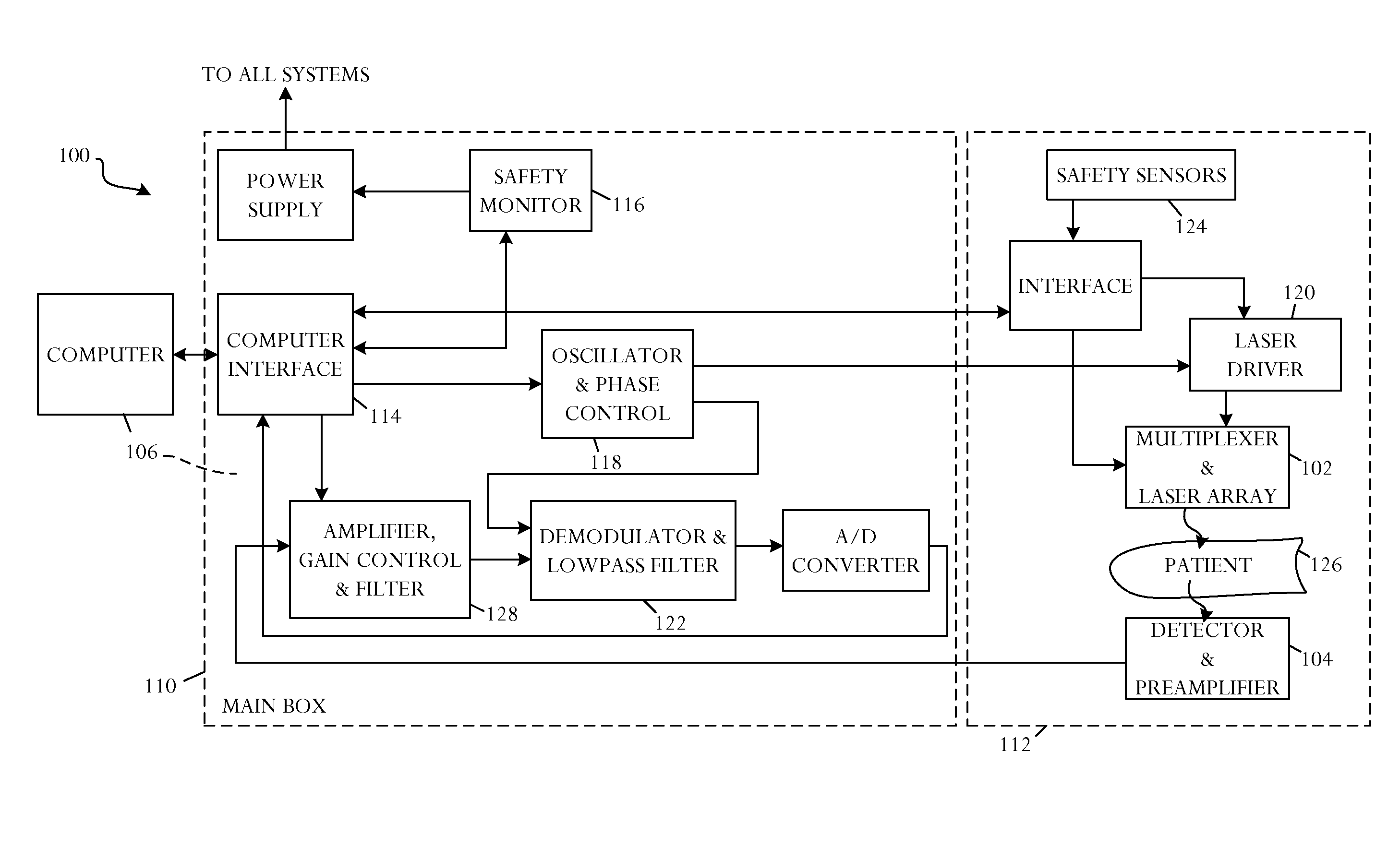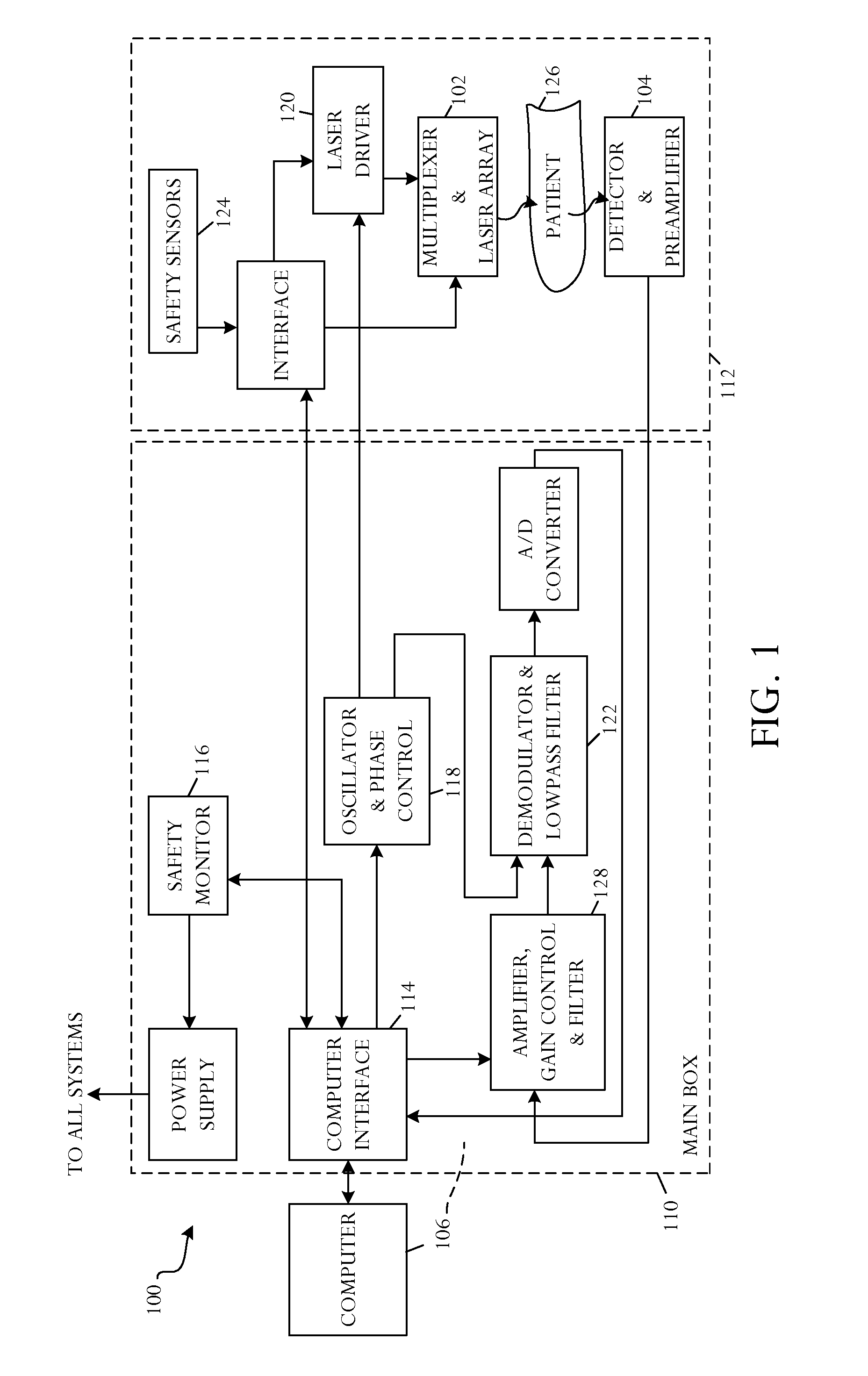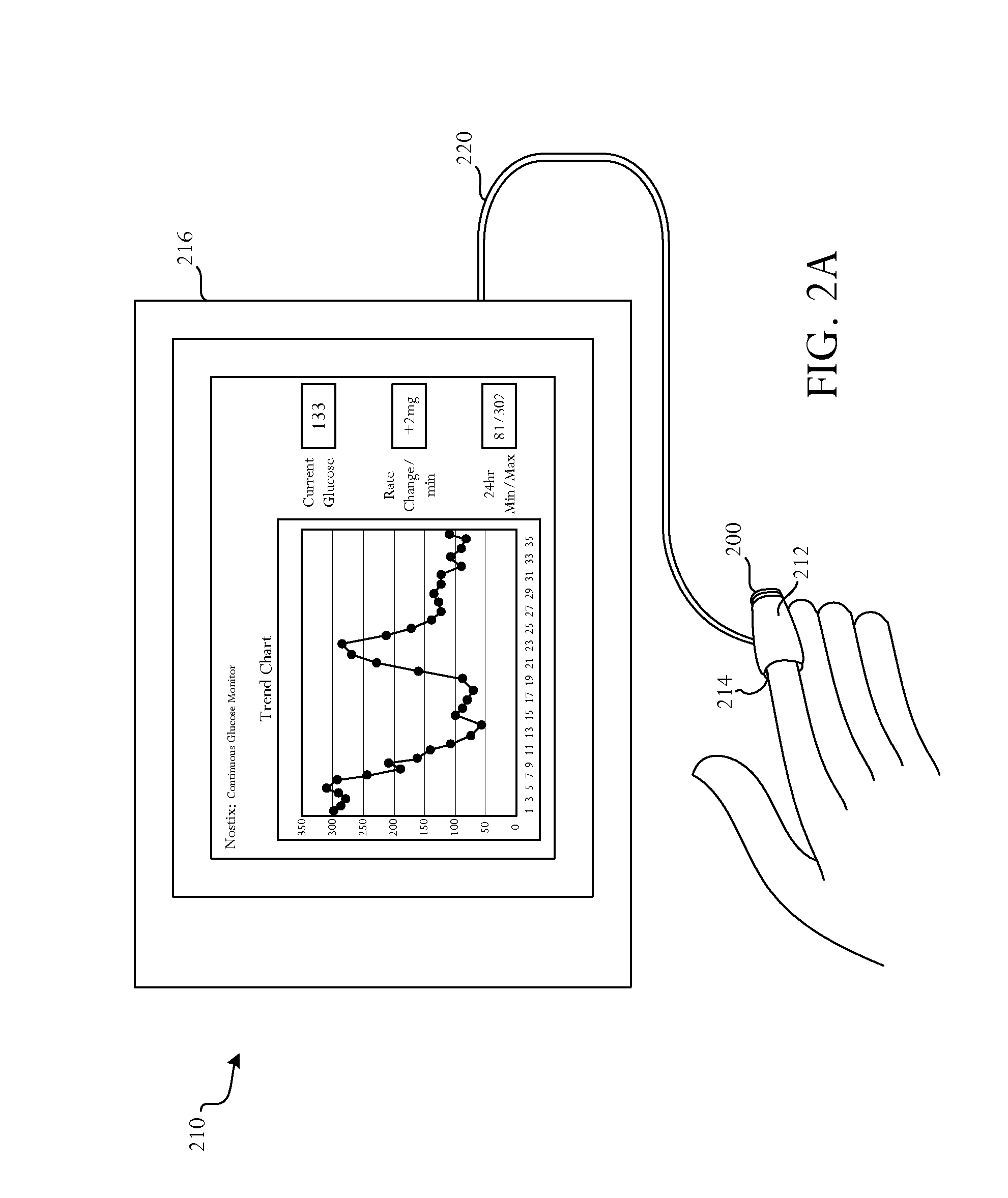VCSEL Tissue Spectrometer
a tissue spectrometer and vcsel technology, applied in the field of vcsel tissue spectrometer, can solve the problem that the ability to non-invasively monitor other parameters has not progressed beyond heart rate and oxygenation
- Summary
- Abstract
- Description
- Claims
- Application Information
AI Technical Summary
Benefits of technology
Problems solved by technology
Method used
Image
Examples
Embodiment Construction
[0010]Near Infrared Spectrometry (NIRS) technology can be used in a tissue sensor and associated sensing method for noninvasive monitoring devices. The NIRS technology replaces conventional pulse oximeters with system and technique that can dramatically expand the number of analytes measured and tracked on a real-time basis.
[0011]NIRS technology further enables expanded analyte sensing and analysis in a compact, cost-competitive format.
[0012]Other existing optical technologies do not expand beyond the parameters of pulse oximeters due to the presence of water in tissue. Water absorbs a great deal of near infrared light and has thus thwarted attempts to noninvasively measure additional analytes. An illustrative tissue sensor greatly reduces or eliminates water interference, thereby creating a “window into the body”. Optics and an analytical algorithm combine with NIRS technology to generate readings across the near infrared spectrum and neutralize the masking effects of water.
[0013]N...
PUM
 Login to View More
Login to View More Abstract
Description
Claims
Application Information
 Login to View More
Login to View More - R&D
- Intellectual Property
- Life Sciences
- Materials
- Tech Scout
- Unparalleled Data Quality
- Higher Quality Content
- 60% Fewer Hallucinations
Browse by: Latest US Patents, China's latest patents, Technical Efficacy Thesaurus, Application Domain, Technology Topic, Popular Technical Reports.
© 2025 PatSnap. All rights reserved.Legal|Privacy policy|Modern Slavery Act Transparency Statement|Sitemap|About US| Contact US: help@patsnap.com



